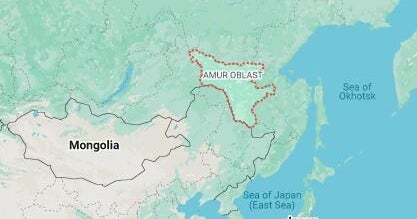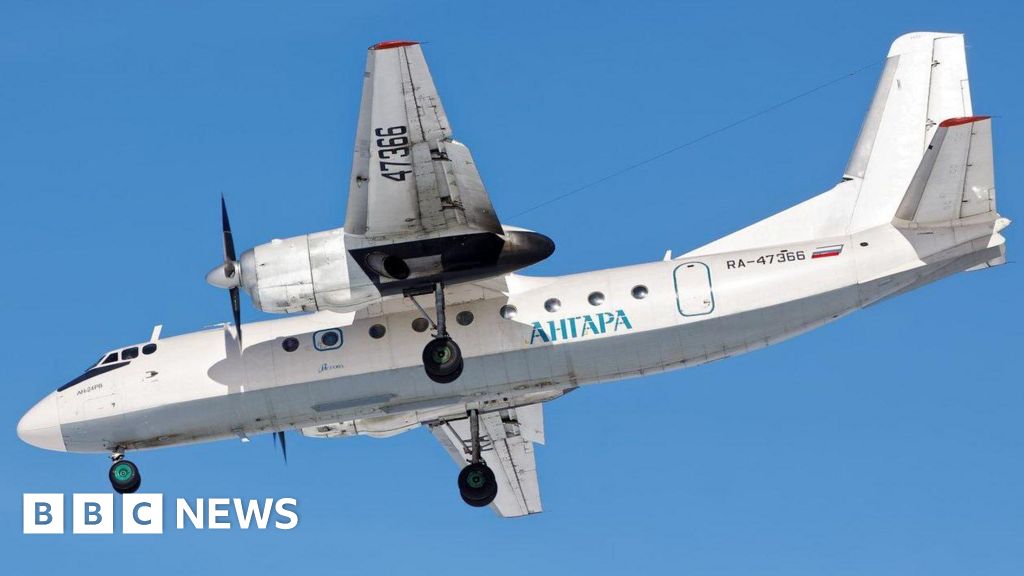In a heartbreaking turn of events, an Antonov An-24 passenger plane operated by Angara Airlines has gone missing over the remote expanses of Russia's Far East. The aircraft, which had approximately 49 to 50 people on board, has vanished from radar as it approached Tynda airport on July 24, 2025. Families of passengers endured a harrowing wait as authorities launched an urgent search operation, filled with both hope and fear for their loved ones.
Contact was lost with the flight during a critical approach
Did You Know
The original name of Google was 'Backrub.'
?
AD
phase, raising serious concerns about the adequacy of air traffic control measures in the region. As news of the disappearance broke, there were widespread calls for transparency regarding the communication protocols that failed to maintain contact with the ill-fated flight. The authorities mobilized helicopters and rescue teams to scour the rugged landscape, desperately searching for any sign of the missing plane and its passengers.
Tragically, the search culminated in the discovery of the aircraft's wreckage, reported to be ablaze, casting a pall over the hopes of survival. Reports confirmed that there was no evidence of life among the wreckage, driving home the devastation of this incident. The tragedy not only touches the families directly affected but also raises broader questions about aviation safety and emergency preparedness in such isolated areas. As investigations unfold, the nation is left grappling with the profound loss and the implications for future air travel in this vast and delicate region.
Q&A (Auto-generated by AI)
What caused the plane to go missing?
The An-24 passenger plane went missing after air traffic controllers lost contact with it while it was approaching Tynda in the Amur region of Russia. Such incidents can occur due to various factors, including technical malfunctions, adverse weather conditions, or navigational errors. In this case, the exact cause had not been determined at the time of reporting, but a search operation was initiated promptly to locate the aircraft.
How does air traffic control work in emergencies?
Air traffic control (ATC) is responsible for managing aircraft in the airspace and ensuring safe landings and takeoffs. In emergencies, ATC follows protocols to assist the affected aircraft, including rerouting other planes and coordinating rescue operations. They maintain communication with the aircraft and provide critical information on weather, nearby air traffic, and landing options. If contact is lost, as in this case, ATC initiates search and rescue operations to locate the missing aircraft.
What is the history of An-24 aircraft incidents?
The Antonov An-24 is a twin-engine turboprop passenger aircraft that has been in service since the 1960s. Over the years, it has been involved in several incidents and accidents, often attributed to pilot error, technical failures, or adverse weather conditions. Notable incidents include crashes during approach or landing phases, particularly in remote areas. The aircraft's design and operational history highlight the importance of stringent safety protocols in aviation.
What are the safety regulations for passenger planes?
Passenger planes are subject to rigorous safety regulations established by aviation authorities, such as the FAA in the United States and EASA in Europe. These regulations cover aircraft design, maintenance, pilot training, and operational procedures. Airlines must conduct regular safety audits, and aircraft undergo thorough inspections before flights. Additionally, emergency protocols are implemented to ensure passenger safety during incidents, including evacuation procedures and crew training for emergencies.
How do search and rescue operations function?
Search and rescue (SAR) operations are coordinated efforts to locate and assist individuals in distress, particularly in aviation incidents. When a plane goes missing, authorities mobilize resources, including aircraft, helicopters, and ground teams, to search the designated area. They utilize radar data, satellite imagery, and local knowledge to guide their efforts. Coordination among various agencies, including military and civil authorities, is crucial for effective SAR operations, aiming to locate survivors and wreckage quickly.



















